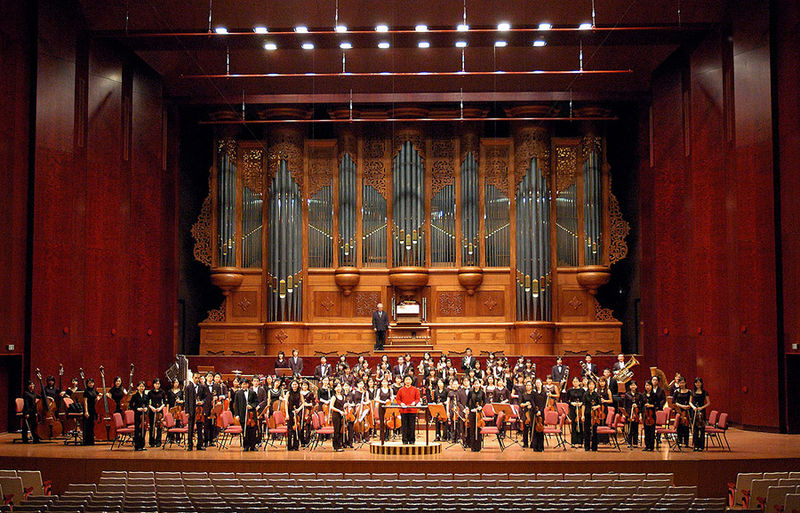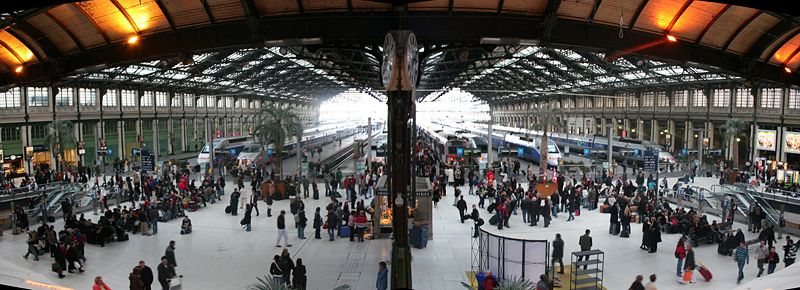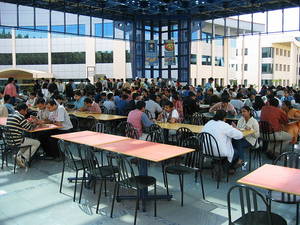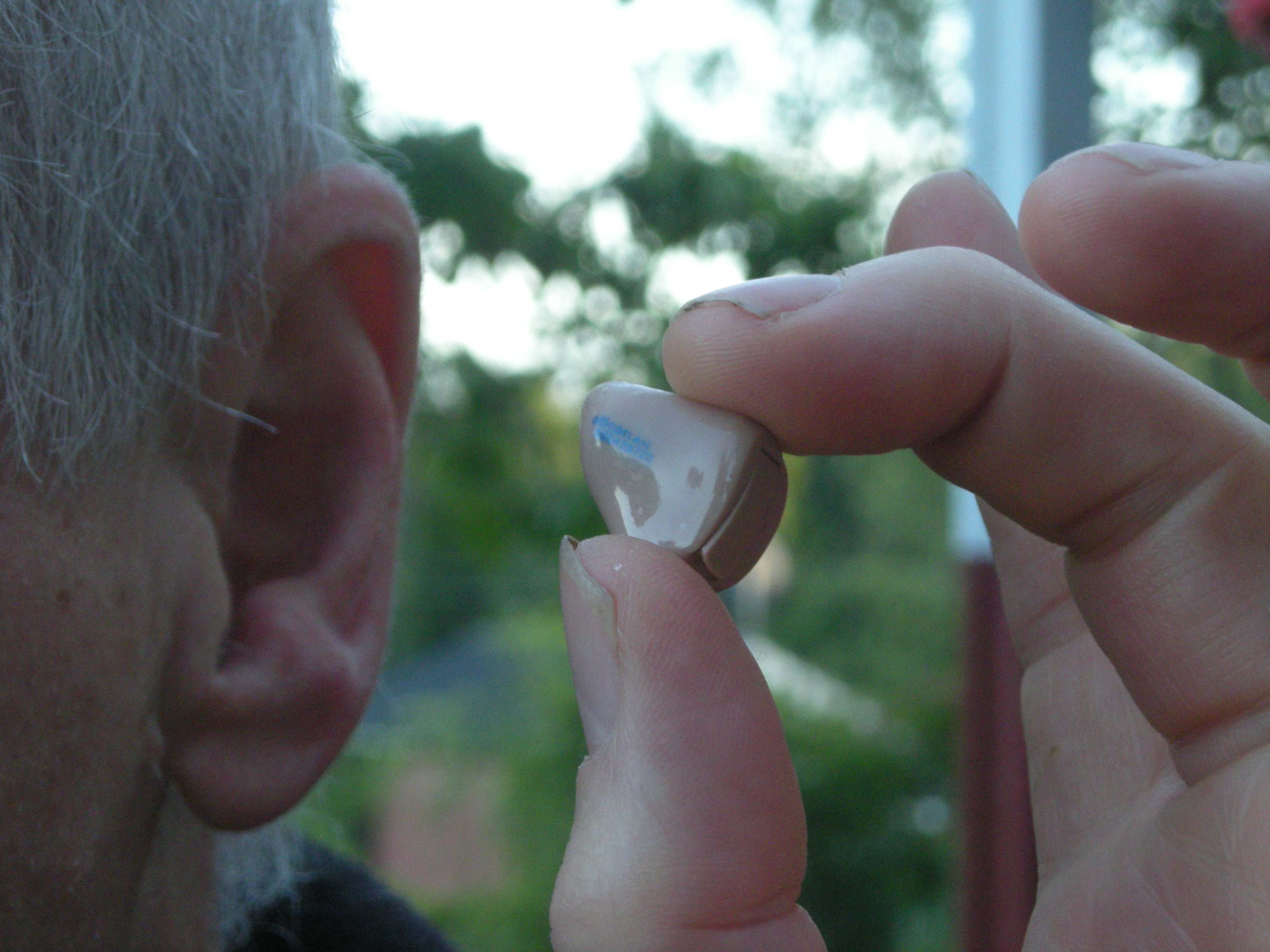Analysing Acoustics and the "Cocktail Party Effect"
Interview with
Chris- Now, in the past, buildings weren't necessarily designed with the acoustics in mind, which means if you take old structures , like railway stations or concert halls, and then you put in a fancy new electronic PA system, the results can be quite poor quality at best, or maybe unintelligible echoes at worst. And that's largely because you don't know beforehand how to compensate for the intricacies of the architecture and then the presence of people and the furniture. But what if you could use a computer system to simulate what you would hear if you were sitting in any part of the building, listening to the sound system that you're planning to put in?...
 Jens - My name is Jens Holger Rindel and I'm working for a company Odeon A/S in Denmark where we developed room acoustic software. The software simulates the sound in a space and it can be used for concert halls, operas, theatres, open plan offices, industrial halls, and a lot of places where acoustics is important.
Jens - My name is Jens Holger Rindel and I'm working for a company Odeon A/S in Denmark where we developed room acoustic software. The software simulates the sound in a space and it can be used for concert halls, operas, theatres, open plan offices, industrial halls, and a lot of places where acoustics is important.
Chris - So, is the basic premise then that if someone's going to build a building or put in some infrastructure, without having to put in the infrastructure they can use your program to work out what it will sound like in that structure? So, let's take an example of, if I'm building a concert hall and I want to work out where to put my speaker system, I can work out how best to arrange the speakers, so that everyone sitting anywhere in the concert gets the best reproduction of the sound?
Jens - Yes and these results can be calculated, covering all possible positions of the audience, so you can easily see from the results how even the acoustics is in the hall and if there are any bad spots, that should be examined further.
Chris - Is the program basically using a model of the structure? So, do you have to feed in a sort of rendition of the arrangement of the building? Where the walls are, where the seats are, so that the program basically sees a virtual construction of the area that you're studying and it uses that to work out how the sound would be experienced within that structure?
Jens - Yes, that's correct. The first step in the modelling is to make a virtual model of the space. The most efficient way can be to simply have the architect's 3D model, then it may be transferred and imported to the Odeon acoustic software. Then assign the sound absorption from the surfaces and scattering of sound which has something to do with the roughness of the structures, and then it's ready to do the acoustic simulation.
Chris - Have there been any situations where people are taking your Odeon software and using it to inform either the ground up creation of a building space or putting in sound systems in existing building spaces?
 Jens - Well, one example could be a recent use in the Copenhagen Railway Station. It has recently got a new loudspeaker system and Odeon was used to predict the speech intelligibility that could be obtained for this new system.
Jens - Well, one example could be a recent use in the Copenhagen Railway Station. It has recently got a new loudspeaker system and Odeon was used to predict the speech intelligibility that could be obtained for this new system.
Chris - In other words, to combat the age old problem of, you can't hear the train wherever you're going is departing from platform 3, five minutes ago because you missed it?
Jens - Yes, exactly.
Chris - So how would you go about solving a problem like that then?
Jens - In this case, the problem could not be solved by bringing down reverberation in the hall because it has a very large volume. So, it was solved instead by introducing line array speakers which are very tall columns of speakers and this is exactly what we can model in the Odeon software. This allows us to calculate how good the sound system is going to work and it's possible then to choose positions as a listener and try to listen to some sound samples, and that's what they have prepared for this. The first one represents that you are standing in the middle of this very big central station. There's a lot of people around as background noise and, 2 metres in front of you, there's a lady talking to you directly...
Copenhagen Central Station Natural Sound
Chris - So she's clearly a mathematician as much as anything else, but what is that revealing?
Jens - Well, you are able to understand her, but it's very obvious that this happens in a very big place and a very reverberant place.
Chris - And so, what would be the consequence of putting in a whole bank of speakers into that space? I mean, you just end up with echoes you can't understand presumably?
Jens - Yes. I then modelled the new speaker system, but before we listen to the whole system, I should like to give a second example, that we just turn on one of the speakers to give an idea of how the sound would be if you have a sound system which is not well planned...
Copenhagen Central Station Original Sound
Chris - So that's the experience we've all had at the railway station, isn't it? We just can't hear what the message is.
Jens - Yes, that's right.
Chris - So, what can we do about this.
Jens - We can then design a proper loud speaker system and with sufficient number of speakers, in this case it was 20, it's much better than what you normally would experience in such a place...
Copenhagen Central Station Improved Sound
Chris - So you must agree, that does sound a whole lot clearer. The whole thing was actually done using a computer simulation of the station and then using that simulation to work out where to put the speakers, to achieve the maximum intelligibility for the people using the station. I was talking there to Jens Holger Rindel who wrote the Odeon software that actually does that modelling.
Chris - Now another person using this system is hearing researcher, Jorg Buchholz at the Technical University of Denmark. He uses Odeon to recreate standardized noisy environments in his laboratory to try to get to the bottom of what's called 'The cocktail party effect.' This is the fact that even despite huge amounts of background noise, we can usually follow a conversation quite easily. But people with hearing impairments actually find this really very difficult, but until we can find out why they find it so difficult, it's really hard to make hearing aids that can compensate.
Jorg - Normal hearing people usually have no problem in communicating in cafeterias or other noisy places, but the hearing impaired often do have severe problems in such situations and hearing aids often do not really help and that's exactly what we're interested in. Why are normal hearing people so good in doing that? Why do hearing impaired people have these problems? And why or how can hearing aids help in these situations?
Chris - So, how are you trying to address that problem? How can you solve it or investigate further what's going on?
 Jorg - First, we have to understand what goes wrong and there are different aspects in it. But for us, we are interested in real life stimuli which is usually quite complicated to look at because we can't follow a person around the city all the time. So what we do is try to get the city situation or cafeteria situation into the laboratory, and then we can measure speech intelligibility in such environments or aspects like distance perception and so on. We can measure in our laboratory space and this would be as close to real life as possible.
Jorg - First, we have to understand what goes wrong and there are different aspects in it. But for us, we are interested in real life stimuli which is usually quite complicated to look at because we can't follow a person around the city all the time. So what we do is try to get the city situation or cafeteria situation into the laboratory, and then we can measure speech intelligibility in such environments or aspects like distance perception and so on. We can measure in our laboratory space and this would be as close to real life as possible.
Chris - I see. So you're bringing the cafeteria or the noisy station or whatever, to the lab by creating it artificially, but you can put the hearing impaired subject in that environment and see how they react and respond to that environment, what they can hear in that environment, and then you can tweak that environment in very standard ways to work out what is going on.
Jorg - That's exactly what we're doing, so we have lots of loud speakers in the room. We create signals using Odeon and we set the person in the centre of this loud speaker array and we even put some - as we call it a 'master hearing aid' on. So this is a computer platform which we can fully control. So, we have the entire system, we can basically control the acoustic environment, the sound sources in there, but also the signal processing in the hearing aid that the subject is listening through in that environment.
 Chris - And presumably, what that will enable you to do is to then work out what aspects of the acoustic environment are bad for a standard hearing aid or bad for a hearing impaired person and work out how to adjust the hearing aid's function to compensate, so the person hears better?
Chris - And presumably, what that will enable you to do is to then work out what aspects of the acoustic environment are bad for a standard hearing aid or bad for a hearing impaired person and work out how to adjust the hearing aid's function to compensate, so the person hears better?
Jorg - That's exactly what we do. For example, early reflections in a room are very, very dominant and in many cases, people consider this as disturbing, but actually for speech, it helps and hearing aids often destroy these early reflections which might not be the most good thing to do.
Chris - Is that a discovery you've only just made, so that hasn't actually filtered down into the hearing aid market yet effectively? Is that something that has yet to break-in and be implemented?
Jorg - Hearing aid companies try these things, but I think it is now the time when you have this transition, where we basically try to go from the simple laboratory into a more realistic environment because there's a difference in how hearing impaired people with hearing aids perform in a laboratory, so how we fit , the audiologist fit hearing aids, and how they then are used in real life. This gap has to be bridged somehow and that's what we do now. So we have the environments - the loudspeaker-based environments, the simulation software and so on, so that we now can do these things and the hearing aid industry is picking up on that right now.
- Previous The Genetics of Hearing
- Next Language in the Deaf Brain










Comments
Add a comment